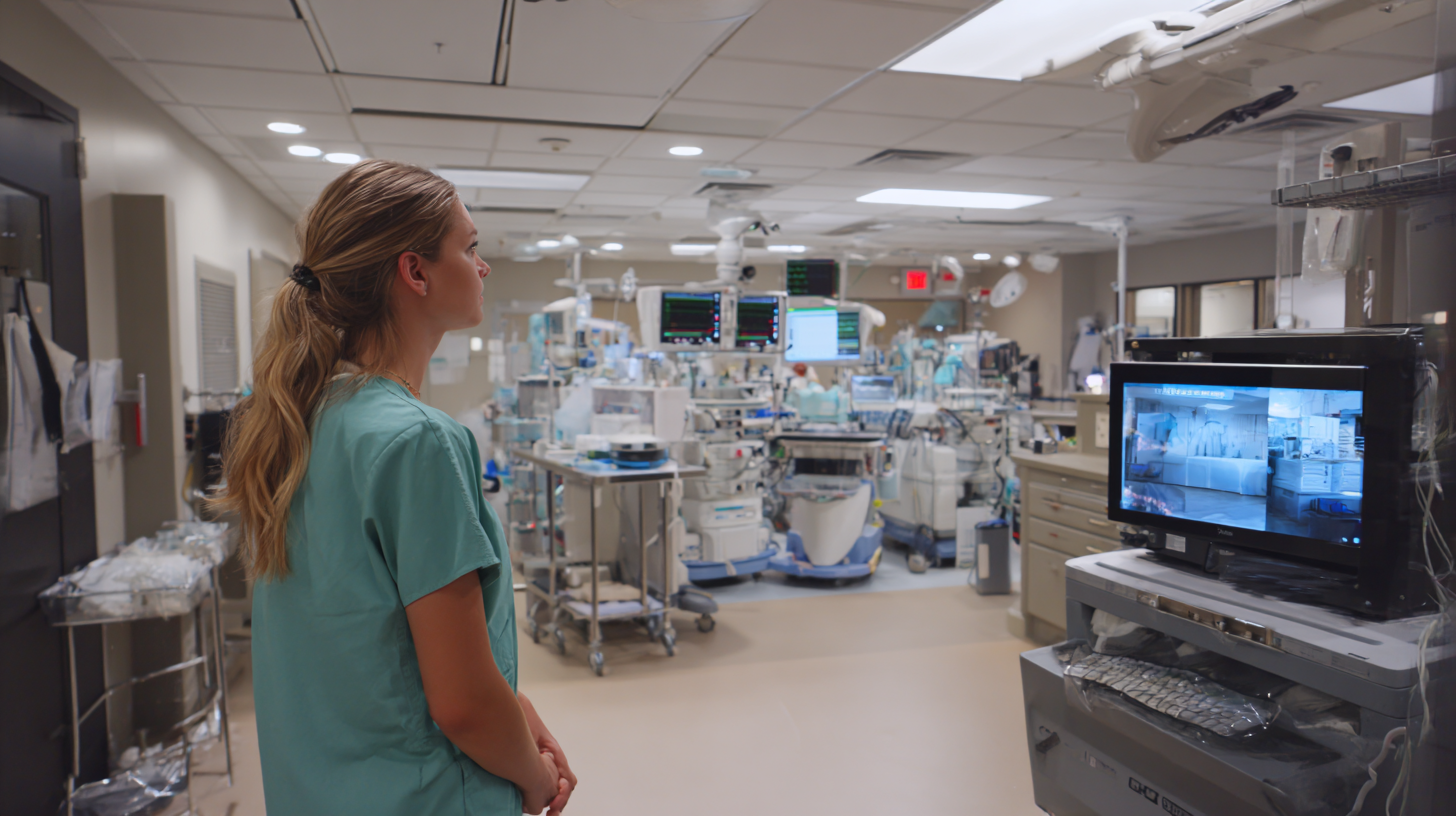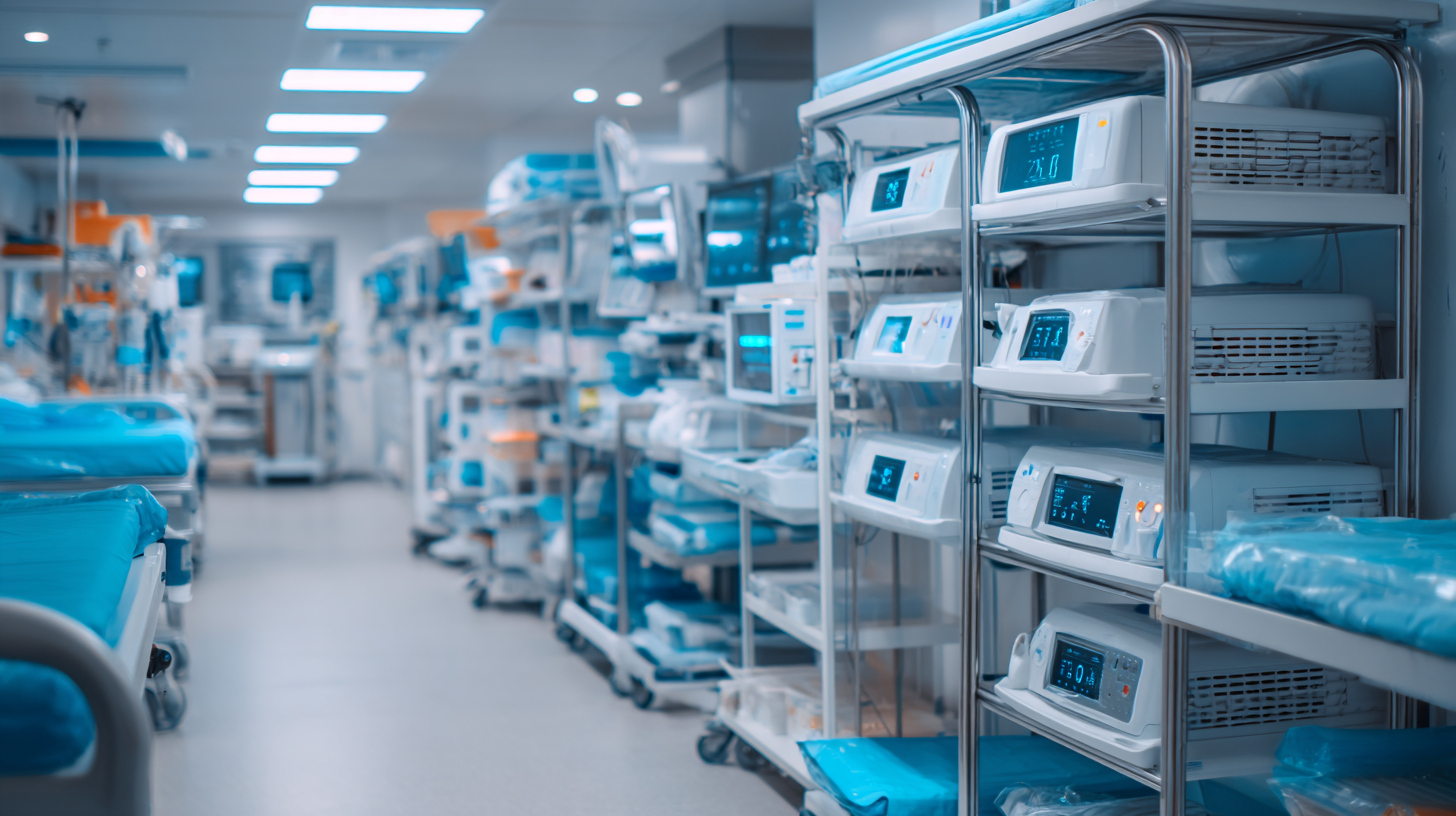Click here to browse our On The Mend Portfolio!
Exploring Best Medical Supply Rental Solutions for Hospital Efficiency and Equipment Shortage Challenges
In the ever-evolving landscape of healthcare, hospitals are continually facing the dual challenges of maintaining efficiency and addressing equipment shortages. One promising solution that has gained traction is the concept of Medical Supply Rental, which allows healthcare facilities to access necessary equipment without the burden of ownership and high upfront costs. This innovative approach not only maximizes resource utilization but also enables hospitals to remain agile in responding to fluctuating patient needs.

As we delve into the various Medical Supply Rental solutions, we will explore how these strategies can enhance operational efficiency, alleviate financial pressures, and ultimately improve patient care. By addressing the intricate dynamics between equipment availability and hospital management, we aim to shed light on how hospitals can better navigate the complexities of equipment acquisition while ensuring they meet the demands of modern healthcare environments.
Challenges in Hospital Equipment Shortages: An Overview
Challenges in
hospital equipment shortages
have become increasingly significant, affecting the quality of care and operational efficiency in healthcare facilities. According to a report by the
American Hospital Association, nearly 90% of hospitals surveyed have reported experiencing equipment shortages in the past year, particularly during peak times, such as the COVID-19 pandemic.
These shortages not only hinder patient care but also escalate costs and lead to increased wait times for vital procedures.
To address these challenges, many hospitals are turning to
medical supply rental solutions. Renting equipment can provide immediate access to necessary tools without the high upfront costs associated with purchasing new devices.
A study by the
Healthcare Financial Management Association indicates that utilizing rental services can reduce operational costs by up to
20%, allowing hospitals to allocate their resources more efficiently.
Tip: Hospitals should conduct regular assessments of their current inventory to identify equipment gaps that can be filled by rentals.
Furthermore, establishing partnerships with reliable rental suppliers can ensure a steady supply of critical equipment, especially during emergencies.
Tip: Consider implementing a
just-in-time inventory management system to optimize the utilization and rental of medical equipment, thus preventing shortages and improving overall operational efficiency.
Key Factors Driving the Growth of Medical Supply Rentals in 2025
The rental market for medical supplies is poised for significant growth in 2025 due to the increasing efficiency needs in hospitals and the ongoing challenges posed by equipment shortages. According to industry analysis, the medical supply rental segment, which includes products like linens, blankets, and repositioners for patients, is expected to expand remarkably. With a projected compound annual growth rate (CAGR) of over 29.2% from 2025 onwards, the market is responding to the rising demand from hospitals, diagnostic centers, and independent clinics striving to optimize operations while managing limited budgets.
Regional assessments indicate that the surge in the rental market is not only driven by cost-effectiveness but also by technological advancements facilitating better inventory management and logistics. For instance, the global artificial intelligence market is anticipated to soar from $294.16 billion in 2025 to $1.77 trillion by 2032, further highlighting the integration of AI solutions in optimizing the supply chain and enhancing patient care. Brands leveraging these technologies in their rental offerings are likely to lead the way in improving healthcare delivery while addressing equipment challenges faced by medical facilities.
Assessing the Impact of Equipment Rental on Hospital Operational Efficiency
In recent years, hospitals have faced mounting challenges related to
equipment shortages and operational efficiency. According to a
2021 report by MarketsandMarkets,
the global medical equipment rental market is projected to grow from
$36.5 billion in 2020 to $66.0 billion by 2025,
emphasizing the increasing reliance on rental solutions. By incorporating rental services,
hospitals can address immediate equipment needs without the burden of large capital expenditures,
allowing for a more agile response to fluctuating demand.
Furthermore, a study by the The American Hospital Association highlights that facilities utilizing rental equipment reported a
15% increase in operational efficiency. Hospitals that engage in equipment rental can more effectively manage inventory,
reduce downtime, and enhance patient care quality by ensuring that the latest technology is readily available.
This shift in strategy not only alleviates equipment shortages but also enables healthcare organizations
to focus on core competencies while equipping their teams with necessary tools to deliver exceptional patient outcomes.
Innovative Rental Solutions: Enhancing Patient Care and Resource Management
In the wake of ongoing equipment shortages and rising patient demands, innovative rental solutions have emerged as a vital strategy for hospitals seeking to enhance patient care and optimize resource management. By adopting flexible rental agreements, healthcare facilities can access a wide range of medical equipment without the substantial financial burden associated with purchasing new devices. This approach not only strengthens inventory management but also allows for the swift scaling up of services during peak demand periods, thus ensuring that patient care remains uninterrupted.

Moreover, these rental solutions facilitate the quick adoption of the latest medical technologies, enabling hospitals to stay at the forefront of patient care advancements. By renting cutting-edge equipment, healthcare providers can offer specialized treatments and therapies, ultimately leading to better patient outcomes. Additionally, integrated rental programs often come with maintenance and support services, alleviating the operational challenges of equipment upkeep. This symbiotic relationship between rental solutions and resource management empowers hospitals to focus on their core mission: providing high-quality healthcare to every patient.
Future Trends in Medical Supply Rentals: What to Expect in the Healthcare Sector
The healthcare sector is experiencing a transformative shift in the way medical supplies are rented, driven by a growing demand for efficiency and resilience amidst equipment shortages. As hospitals face challenges in maintaining optimal inventory levels and managing costs, rental solutions are emerging as a viable alternative. Renting medical supplies not only addresses immediate needs but also fosters a more sustainable approach to healthcare resource management. This trend reflects a broader shift towards flexibility in the healthcare industry, as organizations seek to adapt to fluctuating demands and regulatory changes.
Looking to the future, we can expect several key trends to shape the landscape of medical supply rentals. First, technological advancements will play a significant role. Innovations in telemedicine and IoT will enable better tracking of equipment usage and improve decision-making. Furthermore, the market is likely to see increased collaboration between healthcare providers and rental companies, creating integrated solutions tailored to specific needs. The rising emphasis on cost-effectiveness and operational efficiency will also drive the development of customized rental packages, allowing hospitals to meet their unique challenges more effectively. This evolving ecosystem of medical supply rentals is set to enhance healthcare delivery while addressing long-standing issues related to equipment shortages and operational inefficiencies.

View Products
- Bathroom Safety & Shower Systems
- Canes, Knee Walkers, Rollators & Wheelchairs
- Compression Socks, Stockings & Custom Garments
- CPAP Machines, Devices, Accessories & Supplies
- Incontinence Supplies
- Lift, Reclining, and Sleeper Chairs
- Power Scooters, Power Chairs & Accessories
- Ramps & Handicap Access
- Stair, Platform & Portable Lifts
- Blog
Our Locations
Visit Us in CT, NY & CA
Looking for a 'medical store near me'? Call On The Mend for the equipment and service you need!
